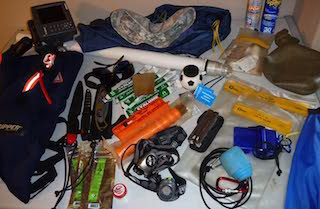 Outline of safety requirements and guidelines to be followed for club paddle outings
Outline of safety requirements and guidelines to be followed for club paddle outings
Advancement of skill level assumes mastery of preceding levels.
- Skills, demonstrated in calm protected waters
- Entry Level
- Be able to swim, or feel comfortable in the water with a PFD
- Wet exit – with & without spray skirt
- Be able to track the boat in a straight line
- Basic strokes
- Forward
- Reverse
- Sweep
- Stopping, within 4 reverse strokes
- Demonstrate backward paddling in a straight line for 25 yard
- Turn the boat 360 degrees
- Bow-Rescue
- 2 person Raft up
- Be able to paddle for 1 ½ hours with one 10 minute break
- Be able to enter and exit the boat at the shoreline without dumping
- Basic signals
- Intermediate Level Open water, demonstrated in light wind of 10 knots and waves, 8" to 10" chop
- Strokes
- Draw Stroke
- Bracing to prevent a capsize. Ability to execute a fair low and high brace.
- Parallel T-rescue
- Be able to paddle for 4 hours with a 10 to 15 minute break every 45 minutes.
- Basic chart and compass reading
- Strokes
- Intermediate Level, moving water, demonstrated in moderate current with light wind and chop.
- Strokes
- Draw Stroke
- Bracing to prevent a capsize. Ability to execute a fair low and high brace
- Parallel T-rescue
- Reading river currents and observation of obstructions
- Eddying and ferrying
- Signals
- Be able to paddle continuously for 4 hours with a 10 to 15 minute break every 45 minutes.
- Basic chart and compass reading
- Strokes
- Advanced Level, open water, demonstrated in high wind 15 - 20 knots, (head winds, following winds or cross winds) and heavy wave action ~ 1-2 ft.
- Set up and tow a kayak and paddler for at least 1 hour.
- Supervise and demonstrate an Bow-Rescue and parallel T-rescue
- Supervise and conduct a deep water rescue.
- Perform a self rescue with paddle float and pump out
- Eskimo roll
- Be able to paddle with a feathered paddle
- Edging
- Tacking
- Turning and broach recovery
- Be able to paddle for 10 hours with a 10 to 15 minute break every 45 minutes.
- Proficient chart and compass reading
- Set up a course and follow same
- Use GPS
- Read or listen and understand weather reports
- Understand cloud formations and know their potential
- First aid CPR skills preferred
- Advanced Level, moving water, demonstrated in swift unpredictable currents with eddys and whirlpools. Wind conditions could be a factor as well.
- See Advanced Level, open water for other skills
- Ability to supervise and execute entrapment rescue (Z-line).
- Eskimo roll
- Edging
- Tacking
- Proficient eddying and ferrying skills
- Be able to paddle for 10 hours with a 10 to 15 minute break every 45 minutes.
- First aid CPR skills preferred
- Paddling gear (requirements)
- PFD (worn)
- Spray deck (worn and fully attached to cockpit coaming). Weather and condition dependent based on judgment of trip leader.
- Rescue kit; recommended for all paddlers, but required for trip leader and sweep position
- Whistle
- Rescue knife (recommended)
- Kayak deemed sea worthy for the paddle, e.g., functional deck lines on big rivers, lakes and ocean. Flotation/bulkheads mandatory.
- Rescue kit
- Throw rope
- Knife - stainless steel blade; folding or sheathed. On PFD
- Optional Signaling devices e.g. mirror, seal light, compact air horn
- Emergency ponchos, Tarp for shelter
- Waterproof flashlight
- Sewing kit
- Green cyalume glow sticks, 3 to 4 each
- Whistles w/lanyards. On PFD
- Fire starter e.g. Mautz Fire ribbon; waterproof matches, expedition style lighter,
- Roll Duct tape
- Marlin spike, optional
- Leatherman-like multitool
- Wind proof Colibri or expedition style lighter
- First aid kit
- First Aid Kit guidelines - Day kit
- 2 pair latex gloves in zip lock bag
- 1x 1 in roll gauze tape
- 1x (2.5 x 2.0 in) moleskin or duct tape
- 1x pair tweezers
- 8x alcohol prep pads
- Betadine in any form - cotton tipped applicator, wipes, spay on, etc.
- 3x (2 x 3 in) gauze pads
- 5x 3 in Band-Aids
- 5x 1.5 in Band-Aids
- 1x fingertip Band-Aid
- 1x knuckle bandage
- 2x (3x3) gauze pads
- 2x triple antibiotic cream
- 2x Benzocaine sting relief
- Imodium
- Aspirin - daily dose
- Gatorade ( dry) packets or other electrolyte replacement product
- Personal medications - migraine, asthma, cardiac, diabetic, anti-histamine, etc.
- Ace wrap
- Triangular bandage or bandana
- Sun block
- Small bottle of saline eye wash; contact solution
NOTE: No first aid kit is a substitute for proper medical training. Individual paddlers are strongly encouraged to attend a certified first aid course to include CPR. Many such courses are available locally.
NOTE: Each paddler should customize his/her own first aid kit according to specific need and personal preferences especially with respect to any specific medications. Let another paddler know if you have any medical conditions such as allergies, seizures, etc. and where in your kayak your first aid kit is kept.
Also, it is advisable to not share medications because, depending on state law, Good Samaritan laws may place liability for medical complications on anyone providing an ill or injured person with medicine.

